How to Write Better Stories. A 20-Minute Microbook.
For Humans and Brands That Want to Grow. More. Easier.

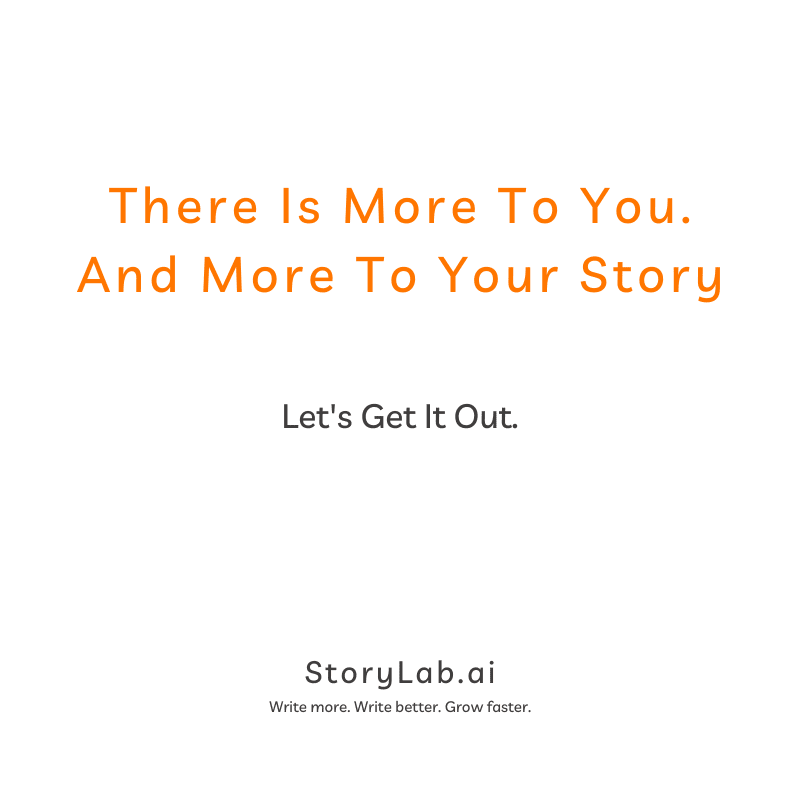
What you will learn from this book
In order to grow, Humans and Brands need to communicate better. To tell better stories, that connect them to others and to their reaching their goals.
That’s what this book is going to help you do.
In this 20-minute microbook book you will learn:
- What the purpose of writing and storytelling really is.
- The importance of knowing your strategic storytelling goals and
how to set them. - How to build emotion, a flowing structure, and clarity into your
writing. - How to edit, share and use feedback to your advantage and the
advantage of your audience. - About me
My name is Erwin Lima. I studied psychology, I used to be a singer-songwriter and I’ve got more than 10 years of experience as a copywriter, award-winning author, storytelling consultant, and coach. In that time, I’ve helped a ton of people and brands to tell better, more effective stories. I’m happy to share some of my knowledge with you. Let’s go make you a better writer.
Why you need to be a better writer
Why do you want to learn to write and tell better stories?
Is it because you want people to trust in you or your brand? Or is it because you want to sell more? Is it because you want to convince your coworkers or your boss or your loved ones of your ideas more easily? To get people to cooperate, and help make your dreams and their dreams come true?
Is it to simply speak your truth more effectively? To be heard? To help? To connect?
What I have seen in 10 years of writing, consulting and teaching.
I’ve been writing professionally and teaching and consulting in storytelling for more than 10 years now. I’ve written three books, one of which won an award. And I’ve shown and taught many people and brands how to tell their story more effectively. What I’ve seen is how easily people can learn how to do this.
Writing in such a way that they can reach their goals faster, with more ease, and more grace.
More often than not, these goals have something to do with growth.
What better stories can do for you.
Who do you know that is great at writing or telling stories? Think about that person, or that company and how easily they connect to people. How easily they get people to trust them, to believe in them, and to want to help them achieve their goals. People and brands that tell better stories get ahead faster. Numerous studies, common sense, and your and my personal experience are testament to that.
Writing more and better can even help you be happier with what you already are, and what already is. And happiness and growth mutually reinforce each other, both in business and in life.
This is wat better writing will do for you. Believe me, I’ve seen it happen so many times.
And this is what this microbook is going to get you.
In what direction do you want to grow?

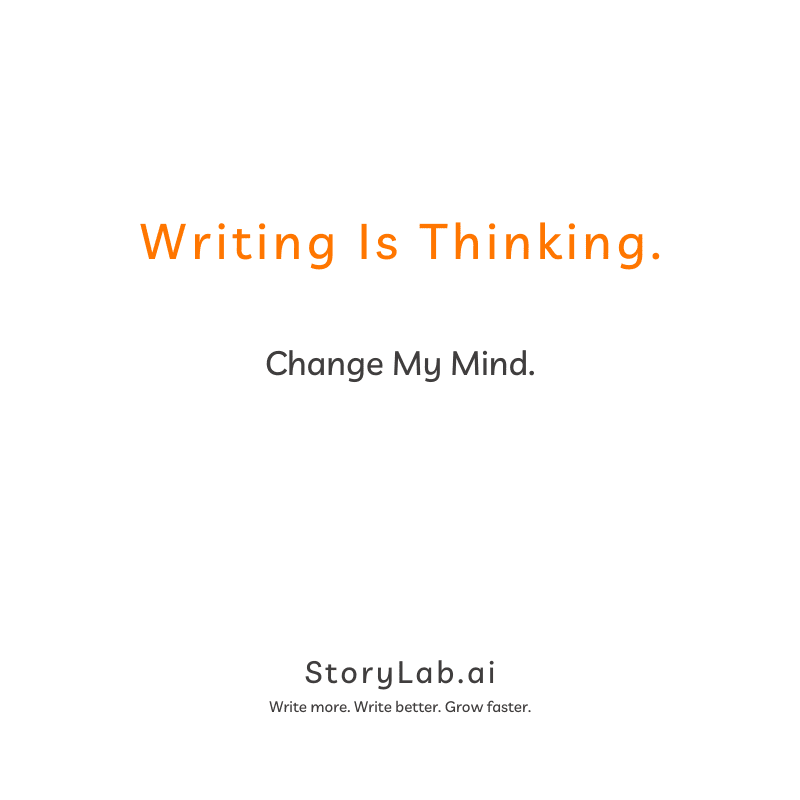
To write better, understand the Purpose of Writing and Storytelling
To organize, communicate and connect; To change behavior and achieve your goals
The purpose or goal of writing is to organize your thoughts and feelings around a given subject in such a way that they become clearer to you, and can be clearly communicated to someone else. Through Storytelling.
The goal of that communicating, in turn, is that you ultimately inspire, convince and/or help someone change something in their opinions, attitudes or knowledge. Which leads to changed behavior.
That change in behavior then having as its ultimate goal to help that person get closer to achieving their goals—and often at the same time helping that person help you achieve your goals.
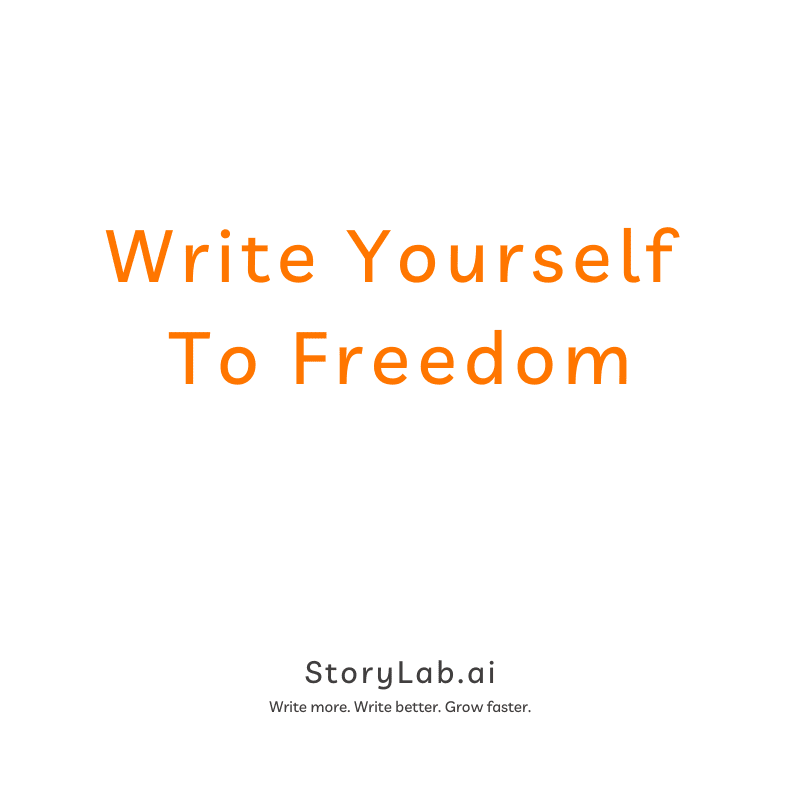
Self-centered, Growth, and Altruistic goals. Often combined.
Now, mind you—these goals of yours and your readers do not have to be self-centered goals. By no means. Your goal could be for more ladies to have a better sense of self-worth. Or for less people to throw plastic garbage in the streets or out in nature. Or for someone to go support a specific charity that you care deeply about.
99% of the time when people communicate, it’s to coordinate. It’s to find ways to combine and connect our goals and needs, and our knowledge and skills to those of another. And/or, we need to feel emotionally connected. These often go hand in hand.
We need each other to grow
99% of the time our goal will have something to do with growth, or—put in another way—with improvement. Of some aspect of our lives, our business or our work, or ourselves.
Finally, 99% of the time, to achieve our growth or improvement goals, we need the help of someone else. And/or we need to find someone who will
let us help them. We need to connect. We need each other to grow.
Good writing helps us to find and connect to each other.
Before you start: Find your Purpose, Vehicle and Strategic Goals
Find or Define your Purpose
To know what you should do next, what to focus on, what to choose and what to write —first, it is incredibly important that you know your Purpose.
What is it you truly want to achieve?
If you know your Purpose, and you can write it down and share it with people clearly, you and your audience will understand why you are
telling them your story. And you’ll know How and What to write. ‘Why’ helps. Because we’re humans.
Find your Why. Find your Purpose*.
*I can help you find your Purpose, if you want. I’ll tell you more at the end of this microbook.

Find your Vehicle
What is it you do? What is it you care about? And what is it that people want you to do, pay you to do, and want to hear you talk about?
We all have at least one, or two, or three things that we are able to do, that we know a lot about and that at least ten thousand people know less
about than we do. And that those people want to learn from us.
Your Unique Strengths will often go unnoticed by you. Because for you, they’re as easy as breathing. Tricky.
The solution is quite simple: Ask people who know you what they think you’re really good at. The end.
This is what people want to hear from you about. Figure out what this thing is for you, by going inside—and then testing outside. Talk to
people. Write stories, publish them, watch your numbers and actively ask for feedback.
This will tell you what your 1 to 3 Storytelling Vehicles are.
For me, they are Finding your Purpose, Growth & Innovation, and Storytelling. Look at me, doing this thing.
What is your Strategic Goal for this story?
Once you know Why you want to tell stories, and What you want to tell stories about, there is one more question you need to answer before you start to actually write.
What is your goal for writing and sharing the particular story you’re sitting down for right now?
Whatever your specific goal is, it’s likely you want to change your audience’s knowledge or attitudes about something, in order to change their behavior.
In order to connect to people so as to cooperate with them, it often helps to give them something that is of service to them. Sharing a useful story is often a good place to start.
Think about how exactly you can help your target audience with your story. And think about how exactly you would want them to think, feel and act after reading or hearing your story.
If you do this, you’re already writing smarter than 80% of people out there.
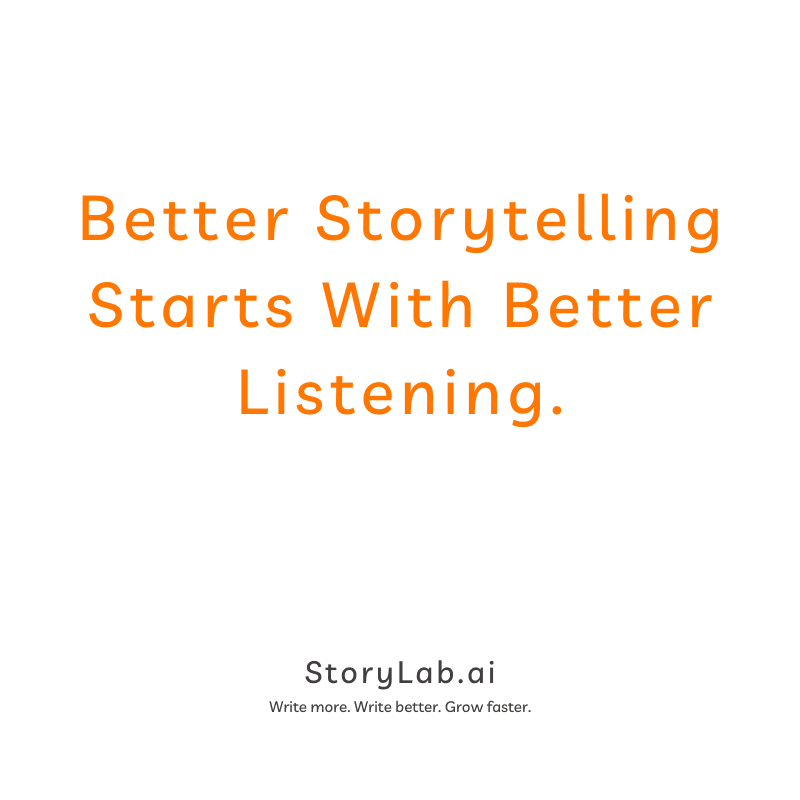
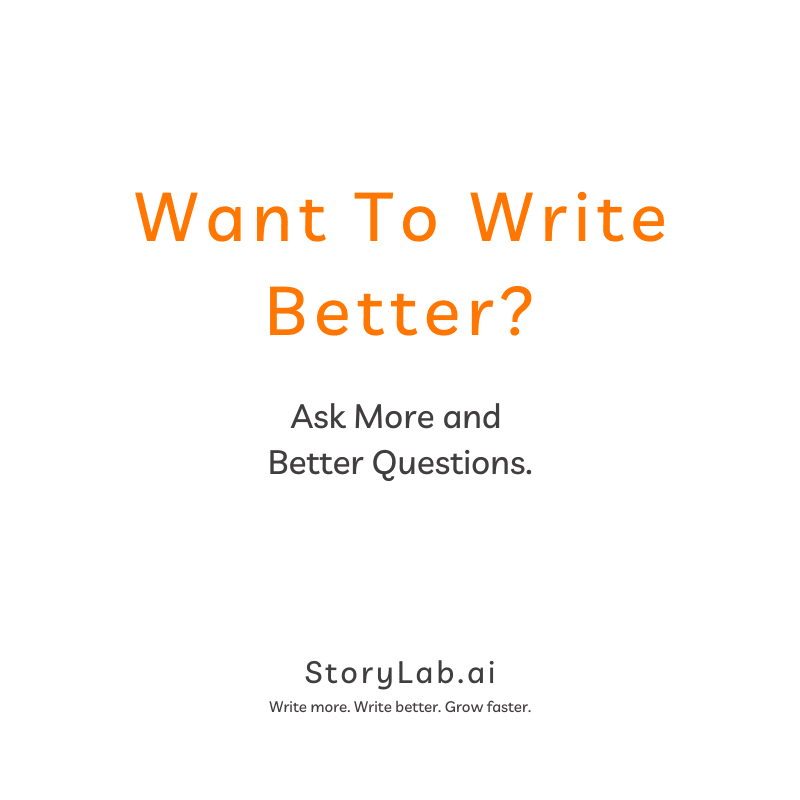
Before you speak: The forgotten art of asking questions and listening – the other side of Storytelling
To write better stories it’s a wonderful idea to think about what your audience needs or wants from you.
But it’s better to ask them.
Questions, Listening, Summarizing, Diving Deeper
Ask questions. Test your assumptions, and truly listen with intent to the answers you receive. Summarize and give back in your own words what you understood, to check if you understood correctly. And dive deeper, when you feel there’s still more to the story.
Listen Fully
Listen with your ears, your eyes, your data and your gut. To get the full scope. Listen to your audience, listen for trends, listen to the feedback you receive.
And listen to yourself. Listen to the underlying emotion driving you to want to accomplish what you want to accomplish. And the underlying emotion driving you to write what you want to write.
Listening better is a gravely undervalued aspect of better writing and storytelling.
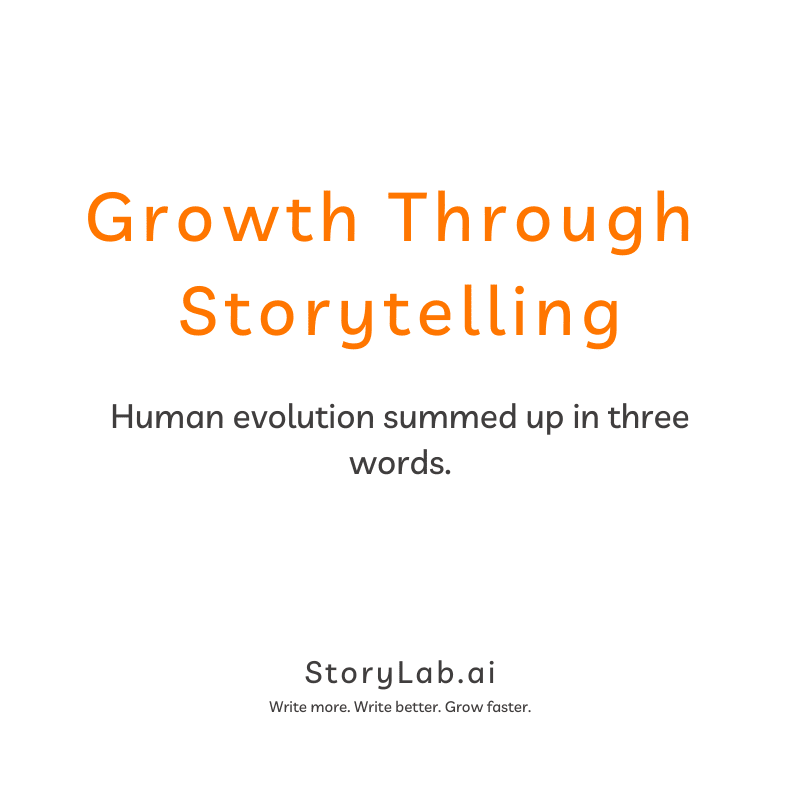
Good Writing: Five Principles and a Seven-Point Storytelling Structure
It’s human nature to tell stories. To connect and to grow. To be happy and thrive. To know we’re alive.
Five Principles of Human Storytelling
You’re human.
That means it’s embedded in your DNA that you know how to communicate with other humans really, really well. You have it ingrained in your body, the structure of your brain and how you naturally think, to make sense of events and the world in the form of stories. And to listen to and tell stories.
That’s great and a better place to start from than 99.99% of all other living things on this planet.
You know that a story has a beginning, a middle and an end. You know there’s some form of a tension arc built into a good story. In business writing, this arc translates to need, solution, result.
What else do you know about storytelling already?
We can summarize what makes a story a good story for humans in the following five points:
1. A good story is told with calm confidence.
If only so you don’t distract from your main message. To be able to have fun with your audience and to really draw them into your story. To be able to be convincing at all: why should I trust you if you’re showing me that you don’t?
Confidence is based on preparation and authenticity. And confidence radiates from a clear structure, saying nothing more than necessary, and relaxed body language—both physically and on paper.
2. A good story is made to be understood.
Make sure your main message or thought is worked out well enough to be intelligible to an intelligent 12-year-old. Check to see if it is. For example, with your significant other who is a layman in your field. Or with an actual intelligent 12-year-old.
Build a structure that allows you to convey your main message clearly, based on a tension arc: from beginning, to change in the middle, to end. Omit any unnecessary information—this is a very important one.
And make your language as simple and as visual as possible. Paint your story. Make us hear the background music, and smell the morning coffee.
3. A good story is made to be remembered.
Make sure your story stirs up a feeling. That will help your audience remember it. In order to do that, tap into the feeling that’s driving you to write the story in the first place.
I’m purposefully listening to Mayra Andrade’s song ‘Lua’ as I’m writing this.
I hear the sunrise in her voice, and the Atlantic Ocean gently caressing the beach in São Vicente, Cape Verde. Her music reminds me of how it’s possible to make someone feel the story that you’re telling in their belly—even if they don’t understand your language.
Make your story a real story—with a main character—that is recognizable to your target audience. What affects your audience?
What is their frame of reference? What challenges or problems do they have to achieving their goals and what do they not yet know?
Have you asked them? I have. It takes less than two minutes to do so.
4. A good story tells your audience something new.
To stand out and be remembered, it is also important for the human brain that a message is new, or at least an element of that message. What’s new for your target audience? What don’t they know yet?
What’s a new way of looking at a familiar problem that many of them haven’t tried yet? There’s always something new to be discovered, no matter how well we know our subject. Including if the subject is ourselves.
I want you to have fun writing.
And to achieve that, I want to challenge you to keep challenging yourself to renew your way of approaching writing. Turn your subject on its head. Literally, if you can. Approach it sideways, or through the eyes of a child. Approach it through the eyes of an alien visiting this planet. Have fun and allow yourself to find a new perspective.
This is what will help you to find new and inspiring ways of telling your stories continuously.
5. A good story sets people in motion.
Leaving people feeling inspired is great—but what you actually want from your Stories is for them to help you achieve your goals as well as helping other people achieve theirs. That means you want to get people moving.
But this is only possible if you also offer them a clear call-to-action. Literally tell them what they can do, if they care and want to know more about what you are saying. Or if they have become convinced of your vision.
This, in turn, is only possible if your own goals are very clear to begin with.

The Seven-Point Storytelling Structure
Here’s the framework I use—I even used it for this microbook—and that I advise you to use in preparing for your story and building its basic Structure.
Notice that the first two questions are for you to think about and write down for yourself. Points 3–6 you literally put on paper to start outlining and building out your story.
This is the Seven-point Strategic Storytelling Structure:
1. What is the subject I’m writing about?
2. What is the purpose of this story and how does it connect to my higher purpose and the goals of my audience? Did I ask them? [No more than 1–2 lines preferably.]
3. What is the main thought I want to share about the subject, and what’s the connected emotion? [Summarize this as the first draft for your title.]
Your title should tell people What this is about, Who this is for, and what you’re Promising.
4. What is my ‘hook’ or intro? A ‘hook’ in storytelling is one to five lines with a new fact, a short story or anecdote. Something that connects to the emotions you want to tap into.
5. What are my three supporting thoughts? [These are your draft sub-headers.] What three points do I want to make to support my main argument/thought and in what logical following order? [Quick cheat for structure: Need, Solution, Result.]
6. Conclusion and Call-to-action (CTA). [If it makes sense or seems necessary; summarize your main thought and how you arrived at it, and:] Literally tell the reader or listener what it is they can do if they are inspired.
7. Short summary. For publishing, Search Engine Optimization and social sharing purposes.
And that’s it.

Writing, Editing, Sharing
How to Write with fun, ease, and impact
Writing should be fun. For effective, fast and enjoyable writing I recommend a variant of the Yoopie method, from Joep Luycx at the Joepie Academy.
You can read more about the Yoopie method and how I apply it myself, here.
The main thing that I add in my method is to think about your strategic goals and your structure, first. After that: The most important thing you need to do, is simply this: de-couple freely writing down what you think and feel—from editing, which comes later.
First, allow yourself to write whatever comes. With your seven-point structure as your writing prompts. Only after that, think about improving what you’ve written.
How to Edit
Only starting after having actually written your story, can you be really critical of your writing. The most important thing here is to try to find the perspective of your reader or listener.
Do I get it and does it get me?
Read your first version, and continuously ask yourself: would this ‘click’ for the target audience I have in mind? Imagine that you are that specific person; your colleague, your boss, that customer you know reasonably well and on a personal level. If you’re them: do you get it? Can you follow it? Does it trigger your emotions?
In addition, there are some basic tricks you can apply to improve your stories.
Short words, sentences and paragraphs win.
Are you using words that are superfluously too long or complex? Consider replacing all words with more than three syllables with something shorter. Shorter words are often the ones that are felt in the gut.
Are you using sentences that are too long and complicated? Two lines per sentence is a lot. I recommend paragraphs of up to three to five lines, alternated with one-sentence paragraphs. Rhythm in writing is underrated.
White space is the written variant of silence and exudes calm and tranquility.
Is the story correct and does it carry the correct feeling?
Finally—and you can check this with or without outside help: Is your story correct, both in terms of content and structure, grammar, and spelling? Does it read or listen away easily? And, perhaps more importantly than that: Is the story authentic and is the feeling you wanted to convey in it?
If so; congratulations. Your story is ready to be shared.
Remember: perfection is your enemy. And it doesn’t even exist. Consistently writing, sharing, collecting feedback and improving – is your greatest ally and fastest route to growth.
How to Share your Stories Strategically
Write and share your stories to find the maximum positive impact for the other as well as yourself.
For all purposes, marketing strategy can be a great model for strategically sharing your stories. Here’s how:
Marketing strategy can be thought of as the overall plan for connecting what you have to offer to what potential customers or stakeholders need to reach their goals. As I hope is obvious by now, it’s not just in customer-seller relationships that this works.
A basic marketing or Storytelling strategy consists of the following:
1. Figure out who you are and what you have to offer.
2. Figure out what it is that people you could help, actually need (with research and by talking to the actual people).
3. Build the messaging that conveys what you understand that your audience needs, how you can help them and how it will benefit them (with the trinity of Need, Solution, Result).
4. Consistently share where your audience listens and reads for the subject matter and type of story you’re sharing.
5. Consistently measure and track feedback from your audience and customers on your messaging.
6. Continuously improve your story based on feedback and data from step 5: go back to step 1, and repeat.
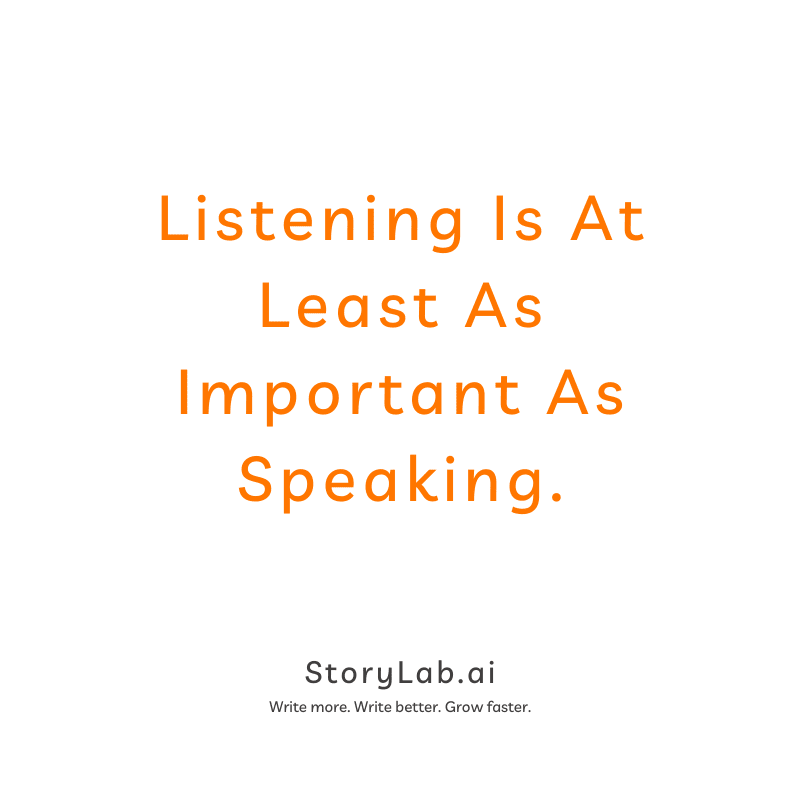
How to gather feedback for improvement
You want to write better stories. Stories that help you reach your goals and at the same time help others reach theirs. After reading this microbook you’ll surely be much better and more effective at writing and storytelling.
However.
It doesn’t end here.
You want to continuously keep improving. Beat the game, eat up the bosses at the end of each level. Here’s how to do that.
Watch people’s behavior
Are you sharing your story in a conversation or presentation? Watch your audience’s faces and body language, listen for their reactions. Are you sharing your story online? Watch for views, clicks, reactions, and shares. Data can be very useful, if tracked with an open mind and consistently.
Take notes.
Actively ask for feedback
Ask your readers, your listeners, your conversation partner; your friends or your spouse: ‘What do you think about this story? My aim here is to X. To what extent am I hitting the mark? How could I make it better?’
Keep improving your stories, your writing, and yourself
Keep listening and watching for feedback and responses. And keep averaging and weighing them out. Are there patterns, things you keep coming across from multiple sources? Decide what you want to do with these patterns and insights, and improve your writing. Continuously.
This of course is only possible if you write and share stories consistently.
So. What have you learned from this book?
• The purpose of writing and storytelling: finding the place where your goals and your audience’s goals connect.
• The importance of knowing your strategic storytelling goals and how to set them.
• How to build emotion, a flowing structure, and clarity into your stories.
• How to edit, share and use feedback to your advantage and the advantage of your audience.
• Why it’s important for your growth to forget about perfection and write, share and improve your stories consistently.
This is how you become a better writer and a better storyteller. And through telling better stories, you grow faster and with more ease, to become a better, happier you.
Every day, from this day forward, forever. You’re welcome. And thank you.
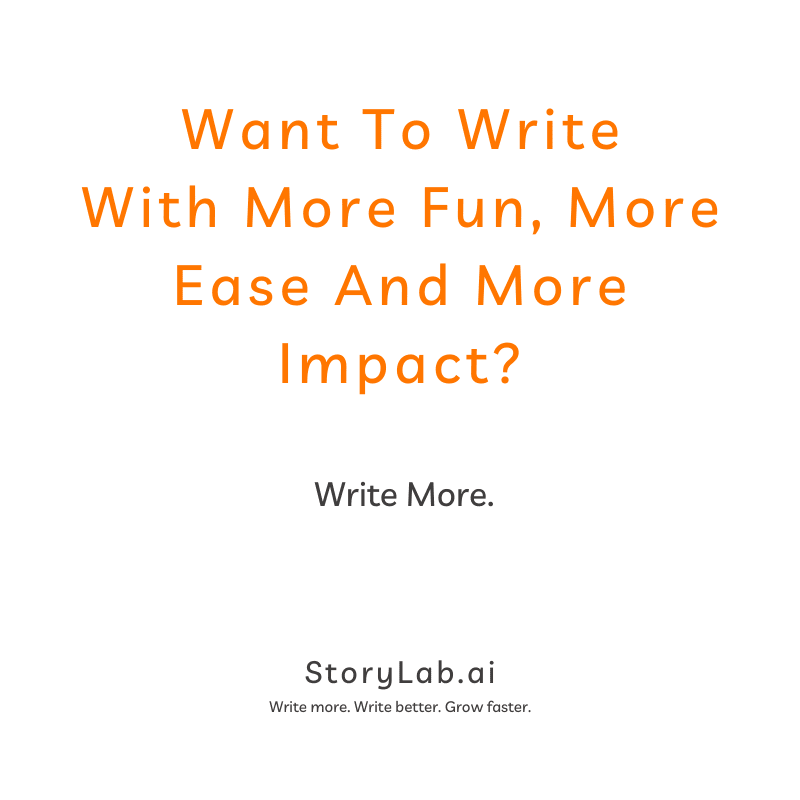

This book was written by Erwin Lima, at StoryLab.ai.
Welcome to StoryLab.ai
Write more. Write better. Grow faster.
Storylab.ai is an online tool That generates content ideas for you, and then helps you along the writing process by generating hooks and outlines for your stories. We also offer ready-made copy for your marketing purposes.
To reach your growth goals, you need better copy.
More stories. Faster.
We can help you get there.
And we’ll help you become a better storyteller along the way.
Want to write more and better stories? Give our AI-powered generator tool a go at StoryLab.ai.

How to Find, Communicate, and Live your Purpose
New book & online course: Growth Storytelling
Legend Storytelling by Erwin Lima is a book and a 30-day Purpose-driven Storytelling program — all wrapped into one.
For Humans and Brands that want to Grow. More. Easily.
Read more at Lifebeyond.one
There is more to you. And more to your story.
Go get it out. Write. Now.
StoryLab.ai
Author bio:
 Erwin Lima: What inspires Erwin is helping people, teams and brands to become the best version of themselves. Guiding them with curiosity, empathy, and Growth Storytelling.
Erwin Lima: What inspires Erwin is helping people, teams and brands to become the best version of themselves. Guiding them with curiosity, empathy, and Growth Storytelling.
Over the past 10+ years as a copywriter, author, consultant, and coach, he’s helped dozens of Brands, Teams, and individual human beings to grow their sense of motivation and focus, but also their reach, engagement, and revenue— through the power of their own story. You can find Erwin on LinkedIn and on his website.
Interesting articles
- Demystifying Google’s Core Web Vitals: A Guide to SEO Success
- AI-Powered Content Creation: Tools and Techniques for Marketers
- 5 ways of using AI to Improve your Marketing Efforts
- The Importance of Branding in Digital Content Creation
- How to Write Press Releases for Optimal Results
- Revitalize Your Blog: Fresh Content Ideas to Engage Your Audience and Generate Leads
- The Psychology Behind Choosing The Right Color For Your App Designing
- Avoid Data Loss in Google Workspace: A Comprehensive Guide
Master the Art of Video Marketing
AI-Powered Tools to Ideate, Optimize, and Amplify!
- Spark Creativity: Unleash the most effective video ideas, scripts, and engaging hooks with our AI Generators.
- Optimize Instantly: Elevate your YouTube presence by optimizing video Titles, Descriptions, and Tags in seconds.
- Amplify Your Reach: Effortlessly craft social media, email, and ad copy to maximize your video’s impact.